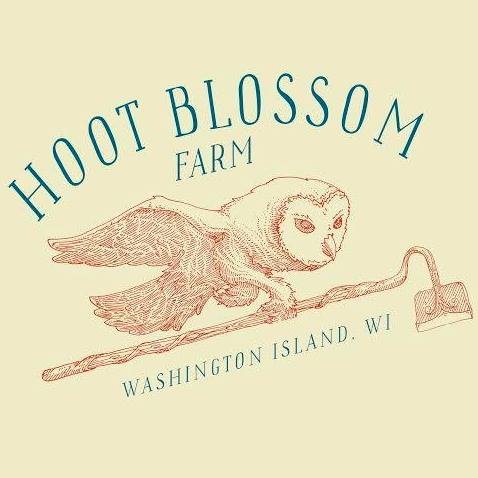Hoot Blossom Farm on Washington Island has another way for native plant enthusiasts to establish pollinator gardens: bare root plants. Beginning this spring, Hoot Blossom will begin shipping collections of native plants grown in their nursery on the Island for home gardeners in Door County and throughout Wisconsin to convert a patch of their lawn in wildlife habitat.
Over the past five years, farmer Russell Rolffs has been propagating native plants and wildflowers as a side project of Hoot Blossom Farm, which supplies organically grown vegetables, cut flowers and herbs for the Island Farmers Market, food store, and restaurants.
The native plant project started with curiosity and a desire to create wildlife habitat on the farm. “We wanted lots of diversity on our small farm, but we had poor results with getting plants to establish.” Then Rolffs had an aha moment. “One late April I was digging up some largely dormant yellow coneflower and bergamot plants I had bedded for the winter in last year’s carrot patch, and they were clearly so alive despite no green growth and lingering snow on the ground. Observing their roots this way felt like being let in on a secret. The roots are full of life.”
“This is kinda how it started. We didn’t set out to start a nursery, but now it feels like a natural extension of what we do.” This spring, Hoot Blossom has around 10,000 plants to dig up for shipment.
Rolffs worked with landscape restorationists Nancy Aten and Dan Collin of Landscapes of Place to curate four types of pollinator gardens suited to specific sun exposures and soil types.
- Door County Meadow: a community of plants native to Northeastern Wisconsin and beyond that thrive with sun in soils that may get really dry in the summer. 17 species
- Wisconsin Tallgrass Prairie: a community of plants native to Southern Wisconsin and beyond that thrive in full sun and in soils that get dry in the summer. 20 species
- Wisconsin (Usually) Wet Meadow: a community of plants native to Wisconsin that thrive with sun and in soils that are usually moist to wet, like garden soil. 17 species
- Wood’s Edge meadow: a community of plants native to Wisconsin that thrive with just a few hours of direct sunlight each day. Soils in shady areas tend to have even moisture, which a little mulch can help maintain. 14 species
Bare-root gardens have three related advantages over starting with seed. First, the plants come packed with an entire season’s worth of energy so they can better outcompete weeds. This also leads to earlier flowering. Second, site preparation is easier. If you’re replacing lawn grass for a native garden, all you need to do is rototill the site once or twice prior to planting in the spring, just like a vegetable garden. Third, weeding is easier because the robust bare-root plants will be large compared to new weed germination, making weeds easier to identify. Perennial weeds, like quackgrass, can still be an issue, but it’s all about giving native plants a head start—once they are growing, most compete very well.
If you want to replace a large piece of your lawn with native meadow, Rolffs recommends using all the tools in the toolkit. Direct seeding, large pots, and bare-root plants all have a role. Bare-root plants are less costly and more environmentally friendly because they don’t require pots or potting soil, and they usually reach maturity two to three years earlier than direct-seeded plants left to grow with lots of weed competition. A meadow that utilizes all of these tools will have a better chance of succeeding. However, bare-root plants are rarely accessible to home-growers. Rolffs hopes that Hoot Blossom’s garden kits will help more people take the leap into native-landscaping.
The need for pollinator habitat in Wisconsin is great. Wisconsin is home to hundreds of beneficial insects, bees, butterflies and birds that need habitat. Pollinator gardens can provide a source of food and nesting. Hoot Blossom’s owners were inspired by Professor of Agriculture and biodiversity expert Doug Tallamy who promotes building up biodiversity through small efforts of individual people. His organization Homegrown National Parks has a goal of replacing half of the privately owned lawns with habitat. He says, “In the past, we have asked one thing of our gardens: that they be pretty. Now they have to support life, sequester carbon, feed pollinators and manage water.”

